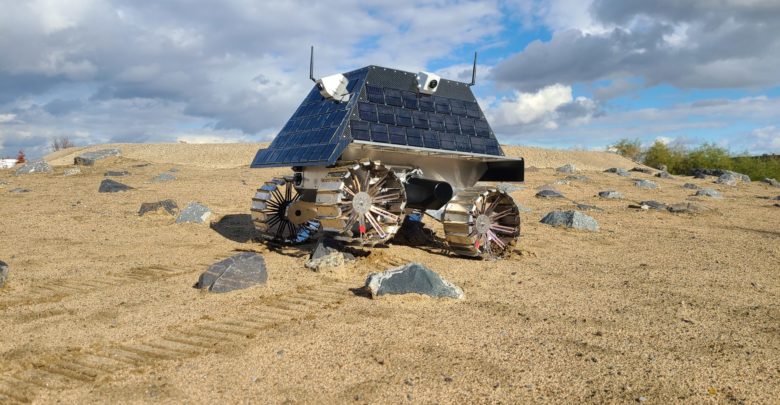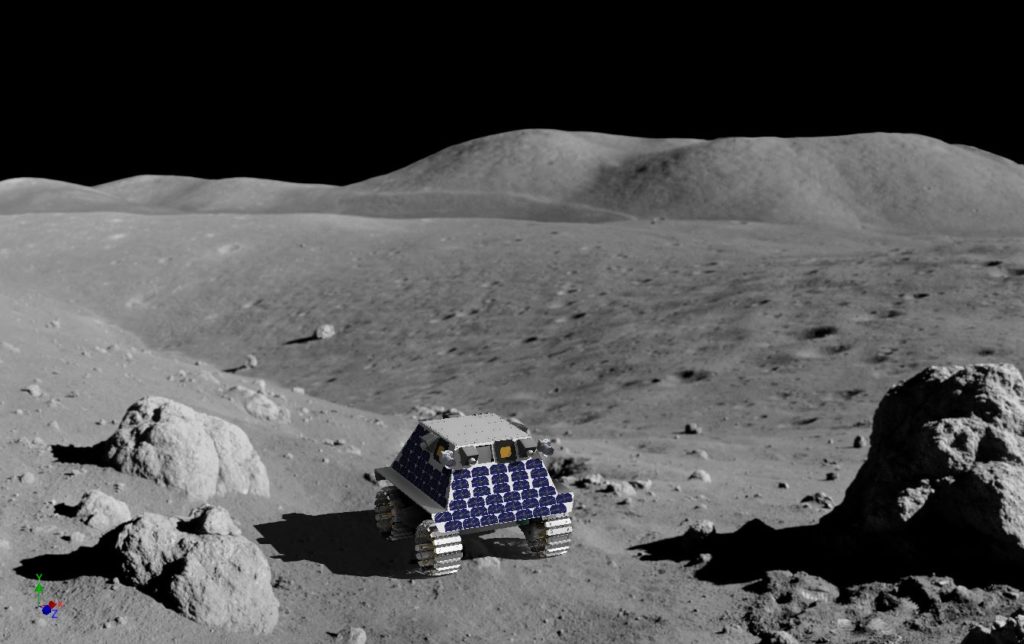 Canadensys Aerospace Corp., 2022
Canadensys Aerospace Corp., 2022In 2026, the first-ever Canadian lunar rover will be sent to the South polar region of the moon to search for frozen water in the lunar soil. Chris Herd, an earth and atmospheric sciences professor at the University of Alberta, is involved in the development of the rover.
The Canadian Space Agency (CSA) awarded a contract to Canadensys Aerospace Corporation, allowing Canadensys to build the 30 kilogram micro-rover. The contract is an addition to Canada’s overall investment in projects involving the moon, including Canadarm3, which will be Canada’s contribution to a lunar gateway led by the United States, and the first Artemis mission.
“The first Artemis mission involving humans will have a Canadian astronaut on-board it. They won’t land on the moon, but they’ll circle the moon,” Herd said. “These projects are all part of Canada being involved in the next phase of the exploration of the moon.”
The project also involves the National Aeronautics and Space Administration (NASA), which will be contributing an instrument to the Canadian-led mission. Herd said that often it’s the other way around, as Canada usually provides an instrument to a NASA-led mission.
Bubble Technology Industries (BTI) based in Ontario, is developing a tool called the Lunar Hydrogen Autonomous Neutron Spectrometer (LHANS). The LHANS tool is one of the six scientific payloads — an instrument that operates in conjunction with other instruments — that will be carried by the rover.
The LHANS tool is being designed to detect frozen water on the moon by looking at the presence of hydrogen. By looking for the radiation signature from space, and its interaction with material beneath the moon’s surface, the LHANS tool can confirm the presence of hydrogen.
Herd is helping develop the LHANS tool to look for the signatures of elements and minerals other than hydrogen, such as iron, calcium, and titanium. He’ll be advising BTI on what accuracy and precision the tool should have to measure those particular elements.
As his expertise is in planetary geology and rocks, Herd will also help interpret elements and minerals in the data collected by the rover. Craig Hardgrove, an associate professor in the School of Earth and Space Exploration at Arizona State University, will interpret the hydrogen data.

The rover will be looking for frozen water in the South polar region of the moon, because past NASA missions have shown that most likely, there is water-ice beneath the surface in permanently shadowed areas.
“These are the cold, permanently shadowed areas that never see sunlight, and they’ve acted as a trap for water-ice over the moon’s multi-billion year history,” Herd said.
Once the rover is on the moon, if it finds frozen-water in the South polar region, it will lead to the possibility of humans being able to go to the moon for a longer period of time.
“Often, these permanent shadow areas are within a crater. So, maybe you set up a base on the rim of that crater, where you can see the sun and communicate with Earth,” Herd said. “And then you can go into that area, and mine the water-ice.”
“We really need to know how much water is there and how close it is to the surface, before we can start to think about sending people.”
Other than hydrogen, the elements and minerals that the rover finds will establish important context about the frozen water.
“It’s really important to have that context. What are the rocks around this resource? What’s the context so that you can go somewhere else and find it again?” Herd explained.
This mission is not Herd’s first rover mission, as he’s been involved in the Mars 2020 Perseverance rover mission as a science team member. The Perseverance rover is collecting samples from Mars that will eventually come back to Earth.
According to Herd, although the rover missions have significant differences, “there are similarities in that they’re both rover missions, and they’ll be operated in similar ways.”
“Being involved in the operations for the Mars mission is a good experience for how we do the operations for the lunar rover mission.”
Every year, The Gateway publishes hundreds of articles like the one you just read that are free for everyone to access. But The Gateway needs your support to continue publishing its award-winning journalism. Please consider donating today, even a small amount can help the University of Alberta’s only newspaper continue serving the campus community. Thank you.




